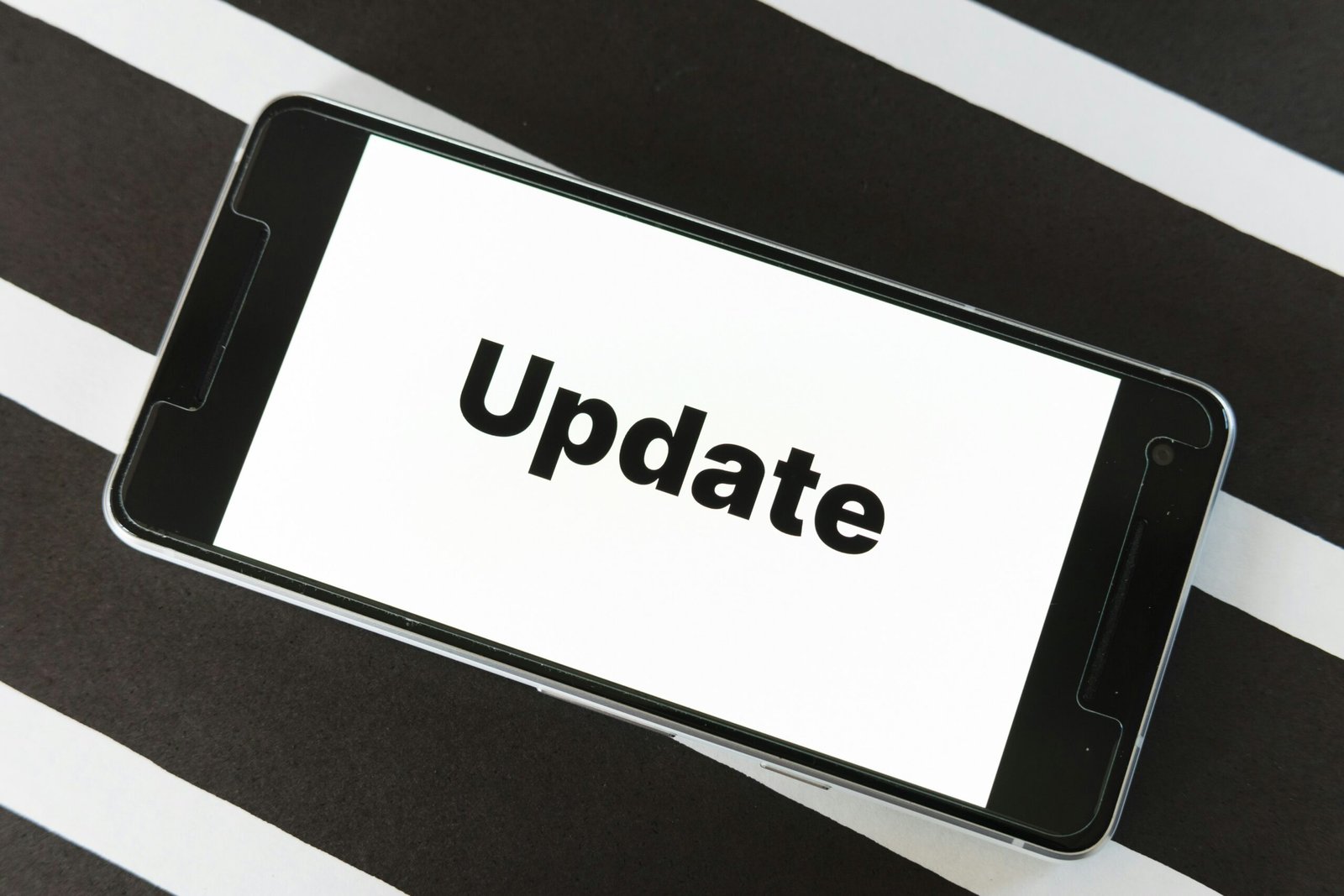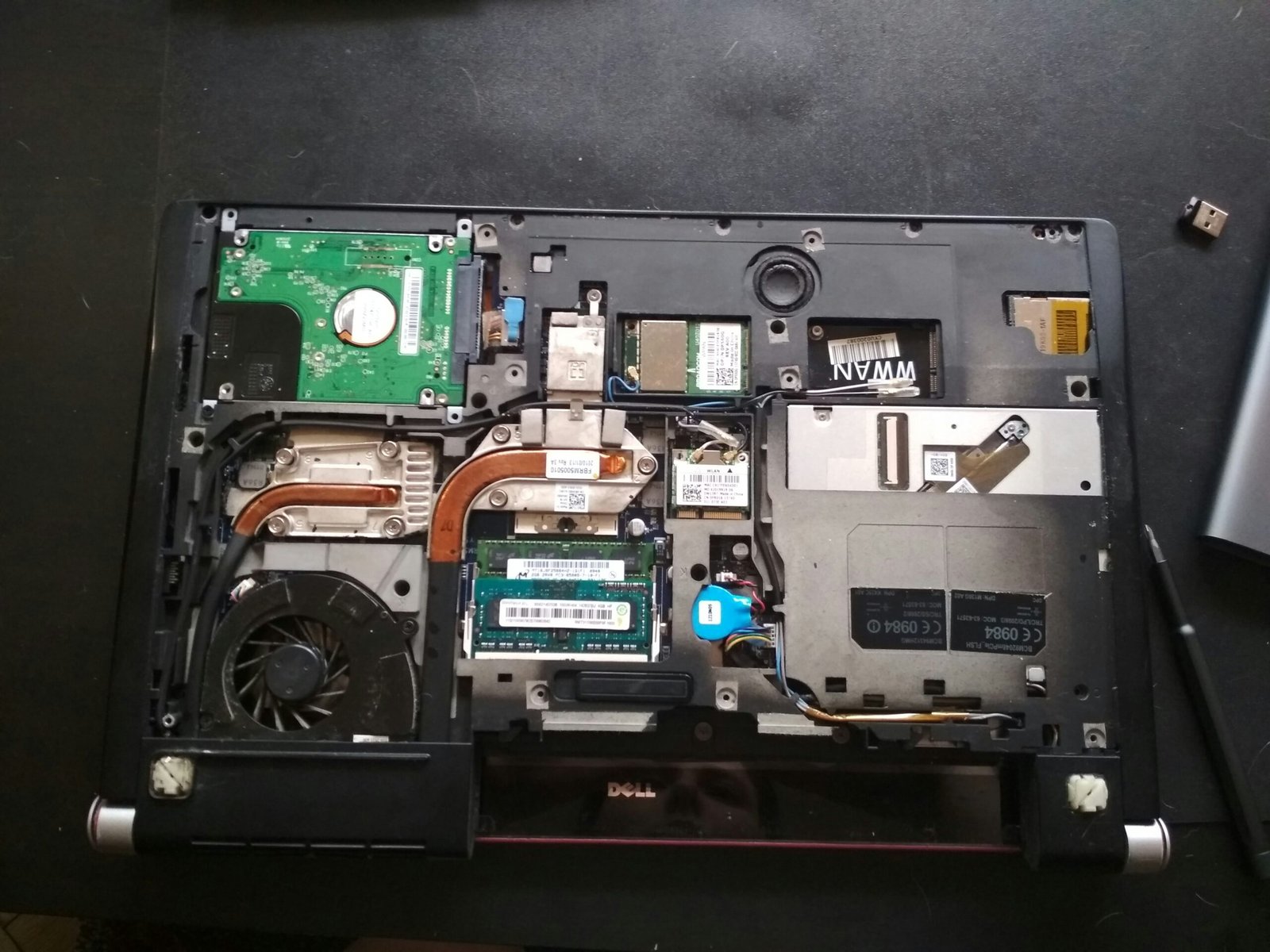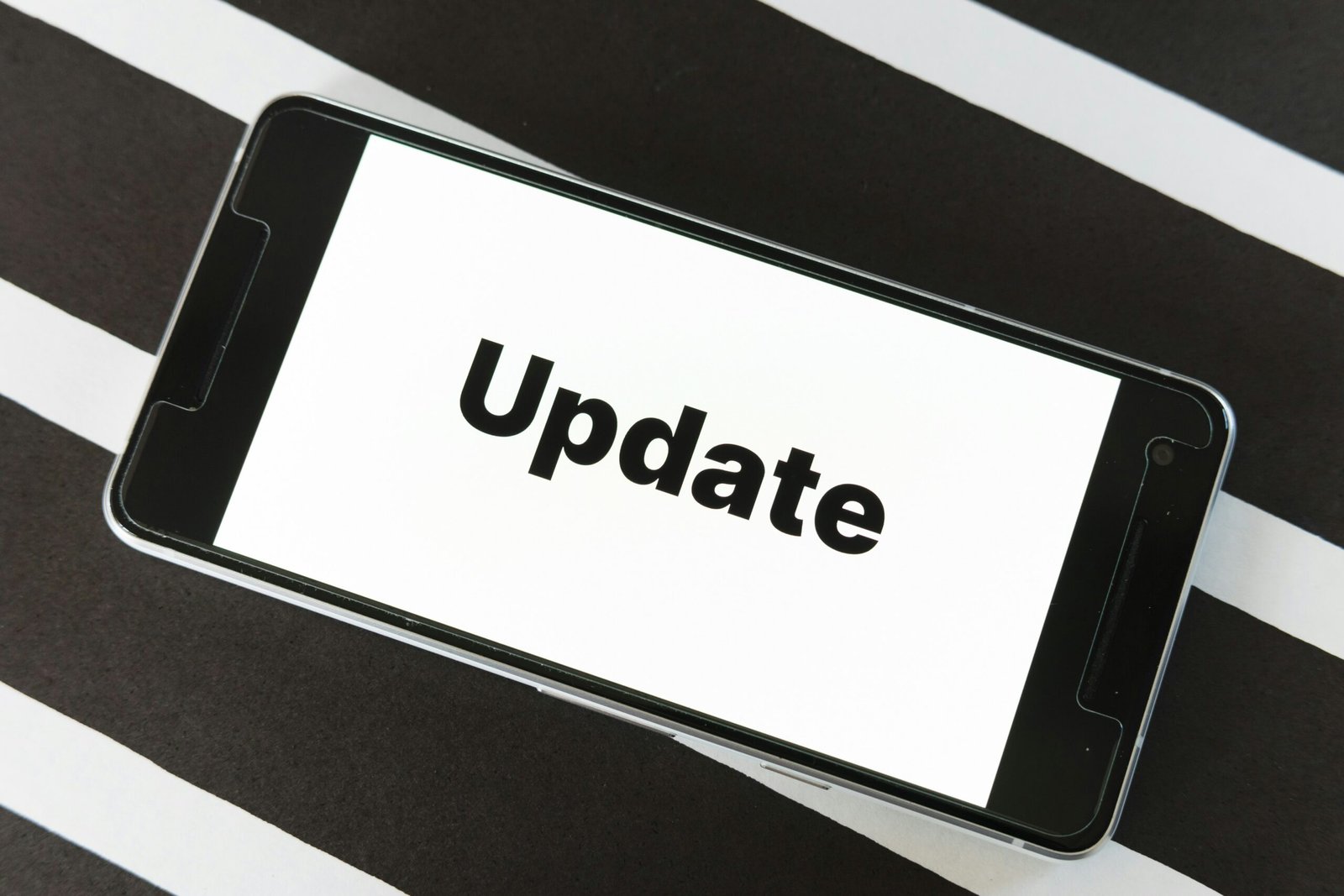
Understanding App Updates
App updates are integral components of software management, serving to enhance the functionality and security of applications across various platforms. These updates typically include bug fixes, performance improvements, and new features that aim to elevate the overall user experience. Developers release updates periodically, responding to user feedback, system compatibility issues, or emerging technological advancements. By continually refining an app, developers ensure that it remains relevant and efficient in meeting user needs.
The primary purpose of an app update is to address existing issues that may hinder performance or undermine security. For instance, updates may patch vulnerabilities that could potentially be exploited by malicious entities, thereby safeguarding user data. Regular updates also ascertain that the app operates optimally on the latest operating systems, minimizing compatibility issues. Ignoring these updates can lead users to experience glitches or reduced functionality, which might deter them from utilizing the app altogether.
Moreover, app updates enable developers to introduce new features, contributing to a more enriched user experience. These enhancements are often driven by ongoing market research and user preferences, allowing applications to evolve in alignment with trends. Consequently, users are encouraged to regularly update their apps to take full advantage of new capabilities while ensuring security and performance enhancements are applied.
In summary, understanding the significance of app updates sheds light on their crucial role in technology. A commitment to regularly updating apps not only benefits the user but also fortifies the application’s resilience against security threats and performance degradation. This proactive approach in maintaining app health ultimately fosters a more satisfactory interaction with the software, encouraging users to remain engaged. Regular updates usher in a sense of reliability and trust in the applications we utilize daily, making them essential for modern digital experiences.
Common Reasons Apps Fail to Update
One of the most frustrating experiences for users is when their applications fail to update. Several common factors often contribute to this issue, and understanding them can help identify and rectify the problem effectively. One primary reason is insufficient storage space on the device. Apps typically require a certain amount of space to download and install updates successfully. If the storage is nearly full, updates might stall or fail entirely. Users should regularly check their device storage and remove unnecessary files or apps to allow adequate space for updates.
Another critical factor is a poor internet connection. An unstable or weak network can lead to incomplete downloads, causing the update process to remain stuck or fail altogether. Users should ensure they are connected to a reliable Wi-Fi network or have sufficient mobile data to facilitate the app updates. It’s often advisable to avoid updating apps during high traffic times when internet speeds may be compromised.
Additionally, outdated devices can hinder app updates. App developers frequently optimize their applications for the latest operating systems and hardware. If a device is running an outdated version of its operating system, it may not support the latest app features or updates, resulting in compatibility issues. Regularly updating the device’s software can mitigate this concern.
Finally, software compatibility problems must not be overlooked. Apps frequently release updates to address bugs or improve features, which may require specific system configurations. If the app’s requirements are not met by the user’s current software, updates may fail. Understanding these common reasons provides users with the necessary knowledge to troubleshoot and resolve issues related to app updates efficiently.
The Forgotten Fix: Restart Your Device
One of the most effective yet often overlooked solutions to address app update failures on smartphones or tablets is simply restarting the device. This basic troubleshooting step can resolve a myriad of technical glitches that might be interfering with the operation of your applications.
When you restart your device, you enable the operating system to refresh its resources. This process effectively terminates all running apps, services, and temporary files that may be occupying system memory. Consequently, this can help alleviate stress on the device and clear out minor anomalies that disrupt the normal functioning of apps. In many cases, when a device is left on for an extended period, memory can become fragmented, leading to inefficiencies that hinder the app update process.
Additionally, restarting your device refreshes the system’s network connection. A poor or unstable connection can prevent app updates from downloading or installing correctly. Upon restarting, your device reconnects to the network, potentially improving signal strength and bandwidth, which are essential for smooth updating processes. This is particularly important if your device has not been restarted in a long time, as it may struggle to maintain effective network connectivity.
Furthermore, occasional updates to the operating system or the apps themselves may require a restart to take effect properly. For instance, updates might modify system files that only align with the next device boot. Therefore, even if an update appears to initiate, further changes may be necessary before it manifests fully.
In conclusion, a simple restart of your device should not be dismissed when facing issues with app updates. This underappreciated fix can reset system processes, clear temporary files, and optimize your device’s performance, paving the way for successful app updates.
Checking Internet Connection for Updates
When attempting to update an application, a stable internet connection is paramount. Many users may overlook this crucial aspect, assuming that their device is prepared for the update process. However, fluctuations in connectivity can significantly hinder the ability to download and install new app versions. Thus, ensuring an optimal internet connection is the first step in resolving update issues.
To begin, it is advisable to test the existing internet connection. This can be executed by opening a web browser and attempting to load a website. If the website does not load or takes an excessive amount of time to respond, it indicates that there might be a problem with the internet connection. In such cases, troubleshooting methods may include restarting the router or modem, which can often resolve temporary connectivity issues.
Furthermore, consider switching between Wi-Fi and mobile data. Sometimes, the Wi-Fi network may be unstable or overloaded. Transitioning to mobile data, if available, could alleviate the problem. Conversely, if mobile data is being used and app updates are not progressing, connecting to a different Wi-Fi network may enhance the situation, provided that the new network has a robust signal and adequate bandwidth.
Additionally, users should be aware of common network issues that can affect app updates. Interference from other electronic devices, for example, can disrupt the Wi-Fi signal. Similarly, network congestion during peak hours could also slow down the connection. In such instances, it is prudent to perform the app update during off-peak hours when network traffic is lighter.
By methodically checking the internet connection and experimenting with various network settings, users can often resolve issues that prevent apps from updating successfully. Taking these initial steps can facilitate a smoother and more efficient update experience.
Clearing Cache and Data of the App Store
When experiencing issues with app updates, a common remedy that is often overlooked is clearing the cache and data of the app store. This process can help resolve conflicts and errors that may hinder your applications from updating smoothly. Below is a step-by-step guide applicable for both Google Play and the Apple App Store.
For users on Android devices, begin by accessing the device’s Settings menu. From there, navigate to the ‘Apps’ or ‘Application Manager’ section, where you will see a list of all installed applications. Locate and select ‘Google Play Store’ from this list. Once inside the app’s settings, look for options labeled ‘Storage’ or ‘Storage & Cache’. Here, you will find buttons to ‘Clear Cache’ and ‘Clear Data’. It is advisable to clear the cache first, as this typically resolves temporary glitches. If the issue persists, proceed to clear the data, which will reset the app’s settings and may require you to sign in again.
For iOS users, clearing the cache is not as straightforward, given that Apple does not provide a direct option to clear the cache for the App Store. However, users can achieve a similar outcome by signing out of their Apple ID. Open the Settings app, scroll down to ‘App Store’, and tap on your Apple ID at the top. Choose ‘Sign Out’ and then sign back in after a few moments. This refreshes the App Store and can help eliminate any caching issues that may be affecting app updates.
By routinely clearing the cache and data of the app store, users can enhance their experience, allowing for seamless updates and minimizing the likelihood of encountering issues. This simple process is often the fix that many users overlook.
Ensuring Sufficient Storage Space
When encountering issues with app updates not occurring, one of the primary considerations should be the available storage space on your device. Modern applications often require significant space for updates, which may include new features, bug fixes, or enhanced functionalities. If your device’s storage capacity is nearing its limit, the likelihood of successfully downloading and installing updates diminishes considerably.
To check your available storage space, navigate to the settings menu on your device. On both iOS and Android platforms, you can find this under the “Storage” section, where it will display the total storage capacity and the amount currently in use. By understanding how much space is left, you can determine whether it is adequate for the upcoming app updates.
If it becomes evident that you are operating with limited storage, consider implementing strategies to free up space. Here are several effective tips: uninstall applications that are no longer in use, clear cached data from apps, or transfer large files such as photos and videos to cloud storage or an external drive. Furthermore, reviewing downloads and documents regularly can prevent unneeded files from occupying valuable storage space.
It is essential to recognize that insufficient storage can also impact the overall functionality of your applications. A lack of space may lead to slow performance, apps crashing unexpectedly, or failure to run properly. Therefore, maintaining a healthy amount of available storage is crucial not only for regular updates but also for optimal device performance.
In conclusion, ensuring sufficient storage space is critical for the proper functionality of your apps and the seamless installation of updates. By regularly checking your storage status and following practical steps to manage it effectively, you can enhance your user experience and prevent common issues related to app updates.
Updating Device Software to the Latest Version
Keeping your device’s operating system current is essential for optimal performance and enhanced security. Outdated software can hinder app compatibility and lead to issues such as apps not updating properly. Many users may not realize that an older operating system may lack the necessary support for newer app features, ultimately resulting in a poor user experience. Therefore, it is crucial to regularly check for and install system updates to ensure your applications function as intended.
When device software is not updated, several complications may arise. For instance, developers often release app updates that are designed to function seamlessly with the latest operating systems. If your device is running on outdated software, you risk losing access to vital features or, in some cases, entirely preventing the app from launching. This situation can lead to frustration for users who are unaware that their device’s compatibility issues stem from outdated software, rather than the application itself.
To check for software updates on various devices, the process is relatively straightforward. For Android users, navigate to the “Settings” app, scroll to “About phone,” and select “System updates.” If any updates are available, you will have the option to download and install them. For iOS devices, access “Settings,” tap on “General,” then select “Software Update” to see if there are available updates. Following these steps ensures that your device remains in sync with the latest developments in app technology.
Incorporating regular software updates into your device maintenance routine can significantly improve the user experience. This proactive approach not only enhances app functionality but also bolsters security measures, reducing the likelihood of vulnerabilities that can be exploited. Ultimately, staying updated with the latest software ensures that you avoid the headaches associated with app incompatibility and related issues.
Uninstalling and Reinstalling the App
When faced with persistent app update issues, one of the most effective methods to resolve the situation is to uninstall and then reinstall the application. This procedure can help by providing a fresh installation, potentially clearing out any corrupt files or settings that may be hindering the app’s performance. However, it is important to approach this step with caution to ensure that important data is not lost in the process.
Before proceeding with the uninstallation, users should first back up any essential data associated with the app. Many applications offer built-in backup options, or users might use their device’s cloud storage solutions to save information securely. Depending on the app, reinstalling might lead to data loss, so taking these precautions is crucial.
Once the backup is complete, you can start the uninstallation process. For most mobile devices, this typically involves navigating to the app settings or the main app screen, locating the problematic application, and then selecting the uninstall option. For desktop applications, similar steps can be followed through the control panel or system settings. It is advisable to ensure that the app is not running during this process to avoid potential errors.
Following the uninstallation, the next step is to reinstall the app. This can often be done through the app store for mobile devices or the official website for desktop applications. Search for the app and download the latest version to ensure that you are installing updates that address previous bugs or issues. Once installed, launch the app and, if prompted, restore any backed-up data to regain your previous settings and preferences.
This uninstallation and reinstallation method serves as a last-resort tactic for resolving app issues. It is not only a straightforward solution but also often leads to a positive experience by ensuring that users are equipped with the most up-to-date version of the application. The procedure may take some time, but it can provide a substantial improvement in app functionality.
When to Seek Professional Help
While many app update issues can be resolved with simple troubleshooting techniques, there are specific situations where users should consider seeking professional assistance or reaching out to customer support. These circumstances typically indicate that the problem may be more complex than standard update failures and may require expert intervention.
One significant sign that professional assistance may be necessary is when an app consistently fails to update across multiple devices. If the user experiences this issue not only on their smartphone but also on their tablet or laptop, it may suggest a broader compatibility problem or systemic issue with the application itself. In such cases, it is advisable to reach out to customer support for further investigation.
Another situation warranting professional help is when the app is causing significant disruptions to the device’s overall functionality. If users notice their device slowing down, experiencing crashes, or exhibiting unusual behavior concurrently with the app update problems, this indicates potential underlying conflicts that may require technical expertise to resolve. Over time, unresolved issues can lead to further complications, making it wise to consult a professional.
Additionally, if users have already attempted standard troubleshooting techniques—such as clearing the app cache, uninstalling and reinstalling the app, or checking for system updates—without success, it’s a clear signal that the situation may require specialized support. Users who encounter cryptic error messages during the update process should also seek guidance from customer service teams, as these warnings may hint at more severe concerns that necessitate expert review.
In summary, recognizing when to seek professional help can save users time and frustration. Emphasizing communication with customer support or a tech expert in troubling scenarios can ensure app-related issues are addressed efficiently and effectively.








